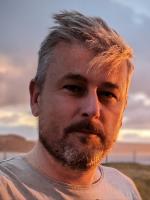
Career
- 2014-date Principal Investigator on Cambridge STFC High Energy Physics theory consolidated grant
- 2011-date Professor of Theoretical Physics, DAMTP, University of Cambridge
- 2022-2023 Scientific Associate, CERN (on sabbatical leave from Cambridge)
- 2009-2010 Reader, DAMTP, University of Cambridge
- 2004-2008 Lecturer, DAMTP, University of Cambridge
- 2004-2009 PPARC Advanced Fellow, University of Cambridge
- 2002-2004 Postdoctoral researcher, Laboratoire d'Annecy de Physique des Particules Theorie
- 2000-2002 Fellow, TH Division, CERN
- 1998-2000 Postdoctoral researcher, Department of Applied Mathematics and Theoretical Physics, University of Cambridge
- 1995-1998 Higher Scientific Officer, Rutherford Appleton Laboratory
Research
Ben is a member of the Department of Applied Mathematics and Theoretical Physics High Energy Physics research group and The Cambridge Pheno Working Group based at the Cavendish Laboratory. He is a particle phenomenologist and is primarily interested in interpreting data coming from the CERN experiments in terms of new particles and forces. Then he tries to rule such new particles and forces out with other data. If this doesn't work, he asks what theoretical framework do they come from and can this explain unanswered mysteries.
Lecturing
Part III (Master's course), lecture notes and accompanying youtube lectures:
Ph.D. Students
- Eetu Loisa: 2021-
- Hannah Banks: 2019-2023
- Maeve Madigan: 2018-2021
- Tom Cridge: 2014-2018
- Sophie Renner: 2012-2016
- Matt Dolan: 2007-2010
- Jordan Skittrall: 2006-2009
- Steve Kom: 2005-2008
Music: Professor Jammin
Selected External Activities
- 2019-date Author of The Review of Particle Physics
- 2018 Quantum Selves art exhibition, Burgh House and Hampstead Museum, London
- 2017 Consultant for Guerilla Science's Intergalactic Travel Bureau stage show
- 2013 TEDx talk, Budapest, Hungary
- 2012 Co-hosted CERN dinner at TEDGlobal event, Edinburgh
- 2005-2006 Scientific Secretary, CERN Council Strategy Group
Publications
Solving local anomaly equations in gauge-rank extensions of the standard model
– Physical Review D
(2020)
101,
075015
(doi: 10.1103/PhysRevD.101.075015)
Sensitivity of future hadron colliders to leptoquark pair production in the di-muon di-jets channel
– European Physical Journal C: Particles and Fields
(2020)
80,
170
Corrigendum to "Next-to-Minimal SOFTSUSY" [Comput. Phys. Comm. 185 (2014) 2322-2339]
– Comput. Phys. Commun.
(2020)
250,
107044
Naturalising the third family hypercharge model for neutral current $B{-}\hbox {anomalies}$
– European Physical Journal C: Particles and Fields
(2019)
79,
908
Collider Constraints on $Z^\prime$ Models for Neutral Current
$B-$Anomalies
– Journal of High Energy Physics
(2019)
2019,
106
(doi: 10.1007/jhep08(2019)106)
HE-LHC: The High-Energy Large Hadron Collider: Future Circular Collider Conceptual Design Report Volume 4
– The European Physical Journal Special Topics
(2019)
228,
1109
(doi: 10.1140/epjst/e2019-900088-6)
FCC-hh: The Hadron Collider: Future Circular Collider Conceptual Design Report Volume 3
– The European Physical Journal Special Topics
(2019)
228,
755
(doi: 10.1140/epjst/e2019-900087-0)
FCC-ee: The Lepton Collider: Future Circular Collider Conceptual Design Report Volume 2
– The European Physical Journal Special Topics
(2019)
228,
261
(doi: 10.1140/epjst/e2019-900045-4)
FCC Physics Opportunities: Future Circular Collider Conceptual Design Report Volume 1
– European Physical Journal C
(2019)
79,
474
Hadron collider sensitivity to fat flavourful Z's for R-K(*)
– Journal of High Energy Physics
(2019)
2019,
137
(doi: 10.1007/JHEP03(2019)137)
- <
- 4 of 23

